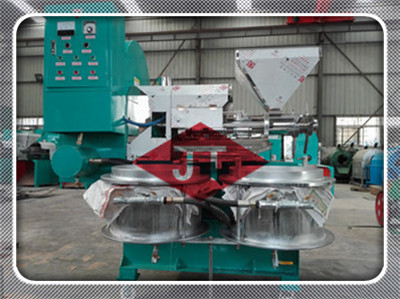Author: Admin View: Post Time: 2017 / 06 / 21

The characteristics and application of the hydraulic oil press
The characteristics and application of the hydraulic oil press: 1. The pressure is wide and adjustable (from 0.1 ~ 150 mpa). Can adapt to a variety of oil and oil processes, including cold pressed, hot pressed, high water slurry oil (olive) and high oil seed (such as cocoa bean, peanut kernel), high pressure oil, etc. The production cycle length (1.5 ~ 2.5 hours), the loading, the unpacking problem (the auxiliary time is 15% ~ 25%), the machine productivity is low, the equipment is much and the area is large. 4. Static squeeze oil efficiency is low, operation requirements: chamfering reconditioning, workshop insulation (35 ° C) 'poor Labour conditions. This kind of oil equipment, therefore, is normally only used in some sporadic oil (such as rice bran, wild small oil), and need to keep the special flavor of oil or nutrients (such as beans, olive, sesame) of polishing slurry oil. In addition, it can be used for the extraction of solid fatty acid or chaff.
The sesame seeds are pressed or leached, and usually do not need to remove the cuticle or seed coat from the sesame seeds. However, the presence of the cuticle is a result of increasing the color of the screw press, which is bitter and has high levels of fiber and oxalate. Such a meal should not be used as a protein source for humans or other single stomachs, primarily as feed or fertilizer for cattle. In order to make full use of sesame oil, protein and other edible nutrients, we need to remove the cuticle or the skin and then squeeze the sesame oil. Raw sesame seeds, which are peeling, squeezing or leaching, are an important ingredient in food.
The removal of sesame seeds is essential for improving the quality of the meal used for human food resources.
The sesame peeling process: one is to soak the seeds in the water for a certain amount of time. The seeded seeds pass through two vertical slices, which are mounted vertically, one is fixed, the other is rotating, the wet seeds are rubbed by friction and the skin is removed from the kernel. Then spray the mixture with water or water spray and sift through the mixture with wire mesh. Remove the seeds and wash them with water and dry them in sunlight or dry.